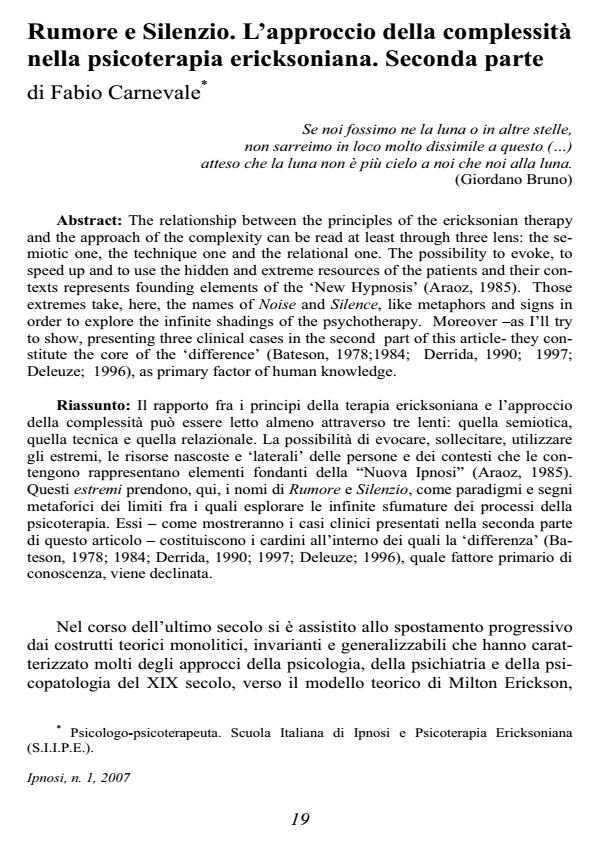Rumore e silenzio. L'approccio della complessità nella psicoterapia ericksoniana. Seconda parte
Journal title IPNOSI
Author/s Fabio Carnevale
Publishing Year 2007 Issue 2007/1 Language Italian
Pages 16 P. 19-34 File size 125 KB
DOI
DOI is like a bar code for intellectual property: to have more infomation
click here
Below, you can see the article first page
If you want to buy this article in PDF format, you can do it, following the instructions to buy download credits

FrancoAngeli is member of Publishers International Linking Association, Inc (PILA), a not-for-profit association which run the CrossRef service enabling links to and from online scholarly content.
The relationship between the principles of the ericksonian therapy and the approach of the complexity can be read at least through three lens: the semiotic one, the technique one and the relational one. The possibility to evoke, to speed up and to use the hidden and extreme resources of the patients and their contexts represents founding elements of the ‘New Hypnosis’ (Araoz, 1985). Those extremes take, here, the names of Noise and Silence, like metaphors and signs in order to explore the infinite shadings of the psychotherapy. Moreover as I’ll try to show, presenting three clinical cases in the second part of this article- they constitute the core of the difference (Bateson, 1978;1984; Derrida, 1990; 1997; Deleuze; 1996), as primary factor of human knowledge.
Fabio Carnevale, Rumore e silenzio. L'approccio della complessità nella psicoterapia ericksoniana. Seconda parte in "IPNOSI" 1/2007, pp 19-34, DOI: